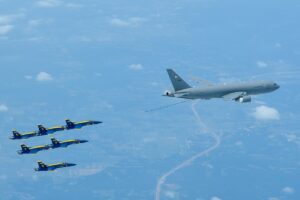
U.S. Transportation Command (USTRANSCOM) is re-examining tanker requirements and collaborating with the combatant commands to alleviate risk associated with the retirements of Boeing [BA] KC-135 and KC-10 tankers and the delayed fielding of fully operational Boeing KIC-46A Pegasus tankers, Air Force Gen. Jacqueline Van Ovost, the head of USTRANSCOM, told House Armed Services Committee legislators on March 31. During a joint hearing of the HASC seapower/projection forces and readiness panels, Rep. Trent Kelly (R-Miss.), a major general in the National…














